It will come as no surprise to anyone who has read my pieces in the past that I like a good jump hour mechanism. Actually, I love a good jump hour mechanism. There is just something about that instantaneous change driven entirely by mechanical means that fascinates me (see The Jump Hour: A Love Story).
Clocks, watches, and the gears inside them tend to move in very small increments that are all based on the unlocking of an escapement at one end of the gear train. This creates a somewhat slow yet constantly rotating assembly of gears. The visual culmination of that basic premise can be found in an awesomely complicated multi-axis tourbillon rotating constantly in a little window.
But the continuous motion of those gears can sometimes become too familiar, thus losing luster. That is when you want something to surprise you, break up the repetition. The simplest answer, and in my opinion the best one too, is to add a jump hour.
This can make a watch very special. Yet there are some timepieces that use that function to change the visual appeal of a watch, going so far as to add jumping minutes for an entirely new experience.
Sometimes these watches fall into a general category that I really dig called “digital” watches. It is called a digital display when the watch provides the time via a readable left-to-right digit layout. Obviously, the mechanics are all still there, but they tell time using digits instead of hands or indications.
And yet not all “digital” watches require the use of jump hours and minutes; some don’t even use a jump at all yet still read digitally. A good number of this type of watch exists, and once you notice more than a handful of such things you start to find favorites. So today I want to break down a list of my seven (plus change) favorite “digital” watches.
No. 7 MB&F HM3 Frog
We start off the list with a watch that doesn’t feature a jump hour, but displays the time via two domes with the numbers printed around the circumference. HM3, the model it’s based on, does read similarly, but the design does not give the sense that you are reading a digital display.
The bulbous eyes of the HM3 Frog protrude from the case and are read perpendicularly to the face of the watch, which actually shows no information but provides a glimpse into the movement. This watch is the most outlandish of this group in terms of design, and it has been one of my favorite MB&F pieces since its debut.
Quick Facts MB&F HM3 Frog
Case: 47 x 50 x 18 mm, titanium, black PVD-coated zirconium, red gold and titanium
Movement: automatic movement designed by Jean-Marc Wiederrecht/Agenhor on a Sowind base
Functions: individual domes for hours and minutes; date encircling the movement
Limitation: 3 separate editions limited to 10 pieces each: Frog, Fire Frog, and Poison Dart Frog
No. 6 MB&F HM5 On The Road Again
The second digital watch on the list continues with MB&F, but this time features a jump hour and continuously running minutes. The minutes are numbered every 5 minutes so most of the time it appears to be providing the time digitally.
The most amazing thing about HM5 is less about the digital display, though; it’s really about light refraction. HM5 uses a horizontally configured system of discs that lie beneath a sapphire prism designed to reflect (the digits are printed backwards) and rotate the image 90 degrees to vertical, and at the same time magnify the numerals for easy reading. Aided by a set of louvers that open on the rear of the case to allow light to charge the Super-LumiNova, the digital display of the HM5 is really simple to read and very difficult to build.
Quick Facts MB&F HM5
Case: 51.5 x 49 x 22.5 mm, CarbonMacrolon, zirconium, red gold, and titanium
Movement: automatic movement designed by Jean-François Mojon and Vincent Boucard of Chronode on a Sowind base
Functions: minutes and bi-directional jumping hours displayed by sapphire crystal prism
Limitation: 66 pieces in each style
No. 5 De Bethune Dream Watch 5
Breaking into the top five we meet the first watch that is really based on design ideas from horological history updated for the twenty-fourth century. The De Bethune Dream Watch 5 is so incredibly space-minded that it even looks like it is zooming through space nearing light speed.
The time is read via a jump hour disc placed next to a continuously rotating minute disc that has every five minutes labeled, which makes time telling very intuitive. This idea has been used in many pocket watches and wristwatches over the last 150 years, but never with such a fantastic form factor as this.
To make matters even more amazing, there is a spherical half-titanium, half-stainless steel moon phase indicator to the left of the jump hour, and the jump hour aperture is made from polished and heat-blued titanium, both very difficult to achieve and definitely De Bethune trademarks. Truly it would be a dream to wear this one.
For more, please see Heartbeat: De Bethune Dream Watch 5.
Quick Facts De Bethune Dream Watch 5
Case: Grade 5 titanium, 49 x 39 x 11 mm
Movement: Hand-wound Caliber DB2144 with silicon/white gold balance wheel, triple pare-chute shock absorber, power reserve five days
Functions: Jumping hours, analogue rotating disc for minutes, spherical three-dimensional moon phase indication accurate to one day in 1,112 years.
No. 4 Harry Winston Opus 3
Continuing the countdown, we get to something that completely surprised the industry when it was released. And even though it took many years to perfect and begin delivery, this watch remains an iconic symbol of how modern watchmaking changed in the early part of the last decade.
Designed by the incredible Vianney Halter, who also made the first prototype, the Opus 3 reads hours and minutes digitally and via jumping mechanisms. That means every minute a new digit jumps into view, which is a very impressive feat from an energy standpoint.
What’s more, there is a countdown in of the last four seconds before every jump, every minute, and every hour. Add to this an instantaneous digital date in the center and this watch has a lot going on inside the case. Seriously amazing and the first wholly “digital” watch in the countdown.
For more, please see The Harry Winston Opus Series: A Complete Overview From Opus 1 Through Opus 13.
Quick Facts Opus Three
Case: 36 x 52.5 x 13.7 mm, platinum or pink gold (25 pieces each), 5 pieces in platinum set with baguette- and brilliant-cut diamonds (4.44 ct)
Movement: manually wound movement with two separate gear trains and twin spring barrels
Functions: digital display of hours, minutes (countdown of last four seconds to jump), seconds; date (countdown of last four seconds to jump), day/night indication
Limitation: 55 pieces
Price: original retail price $80,000; most recent auction hammer price was $238,317 (Christie’s Important Watches Hong Kong, June 2015)
No. 3 A. Lange & Söhne Zeitwerk Minute Repeater
To begin the top three, we arrive at a spectacular example of fine watchmaking, digital display, and added musical functionality. The A. Lange & Söhne Zeitwerk Minute Repeater is the latest in the Zeitwerk collection and provides a decimal repeater to accompany the stupendiferous “digital” display.
Hours and minutes are displayed via three discs that instantaneously jump every minute to accurately depict the time. Surrounding the display are two interestingly shaped gongs that belt out the high and low chimes in decimal fashion; that in itself is a very rare feat. I absolutely love the extra features of this watch, including a smart repeater that finishes chiming what is indicated before changing the display, and a crown that cannot be pulled while the watch is chiming, protecting the movement.
Plus, it just looks so dang beautiful.
Quick Facts Zeitwerk Minute Repeater
Case: 44.2 x 14.1 mm, platinum
Movement: manually wound Caliber L043.5
Functions: jumping hours and minutes, running seconds; power reserve, decimal minute repeater
Price: $467,700
No. 2c Harry Winston Opus 8
Wait, 2…c?
Well, there is a bit of a tie going on with the remaining watches, so this will have to do. The Opus 8 is a digital watch if I ever saw one. The idea was literally based on an eight-segment display as seen on airports and train station departure and arrival boards, only recreated mechanically.
Hours are shown on demand, raising the appropriate segments to indicate the time digitally, while the minutes are indicated by raising segments as a pointer with a vertical scale. The awesomeness of this watch lies in the idea for the display, mimicking a “traditional” eight-segment display – which is a serious undertaking. This watch delivers a wow to anybody who sees it; digital takes on a whole new meaning with this watch.
For more, please see The Harry Winston Opus Series: A Complete Overview From Opus 1 Through Opus 13.
Quick Facts Opus Eight
Case: 45.8 x 33.5 mm, white gold
Movement: manually wound movement with digital display module and 48 hours power reserve comprising 437 components
Functions: digital hours and minutes (shown in 5-minute increments); am/pm indication; power reserve display on back
Limitation: 50 pieces
No. 2b A. Lange & Söhne Zeitwerk Striking Time
Ahh, so this has something to do with the tie. The predecessor to the Zeitwerk Minute Repeater is the Zeitwerk Striking Time, which strikes time in passing as a high or low tone for the hours or the quarter hours. It is not a repeater, though, which makes it very rare as a chime in passing, a personal favorite complication of mine.
Sharing the same display as the Minute Repeater, the Striking Time has a more traditional gong layout but quite the opposite function from a minute repeater. It does not tell you the time in chimes, but acts as a sort of an alert to the passing of time. It can be silenced as well, though what a waste that would be.
Quick Facts Zeitwerk Striking Time
Case: 44.2 x 13.1 mm, platinum, white gold, or pink gold
Movement: manually wound Caliber L043.2
Functions: Jumping hours and minutes, running seconds; power reserve, chiming hours and quarter hours in passing
Price: €100,400 (platinum), €96,700 (white gold), €95,700/$117,500 (pink gold)
No. 2b François Quentin 4N
Now we reach the number two piece, one of the most radical and incredible jumping hour and jumping minute watches I have ever seen. The 4N watch is a monster on the wrist and a monster of a movement. The minutes and hours are all indicated by a complex system of carousels and rotating discs.
The minutes are displayed thanks to six separate discs. Five two-digit discs are mounted to one carousel and rotate 180 degrees for each rotation of the carousel. The sixth disc covers the tens digit and rotates 72 degrees every ten minutes.
The hour carousel is similar to the minutes but has only four discs that each have three digits and rotate 120 degrees every time the carousel makes a rotation. Thanks to a very complicated dance and some really awesome planetary gear systems, the 4N is a seriously impressive “digital” watch with its mechanics on display for the world to see. Increditastic comes to mind.
Quick Facts 4N Watch
Case: 37 x 52 x 16 mm, white gold, rose gold, blasted titanium, black DLC-coated titanium
Movement: manually wound Caliber MVT01/D01
Functions: digital display of hours and minutes via three carousels and ten numbered discs
Limitation: 16 pieces
And, finally, my favorite “digital” watch of all time: drumroll please . . . (ba-da-da-da-da-da-da-da)
No. 1 A. Lange & Söhne Zeitwerk Handwerkskunst
I know, it’s the same dang watch again!
But it’s not.
Oh boy, it is not the same watch. This Zeitwerk Handwerkskunst does away with the complicated chiming systems of the other two on this list and focuses just on the digital display, the heart of the collection.
And then this watch does something different: it sparkles.
Please, just look at that incredibly beautiful, hand-engraved dial. It has to be one of the most spectacular effects ever put on a watch dial. The Handwerkskunst tremblage engraving is an extremely time-consuming technique and produces such a fine mottled surface on the dial that light reflects from almost every angle, creating a look resembling diamond particles sparkling in sunlight. The level of skill that is required to apply this finish right up to the edge of the relief engravings of the numerals and logo is astounding.
The Zeitwerk Handwerkskunst stands out to me as the best “digital” watch that I have ever seen, and it is hard to argue that the watch is not incredible in its own right. This watch, for me, makes the top of the list of almost every category it will slip into, and is probably one of my top five watches of all time.
While the rest of the timepieces on this list are incredible in their own way, nothing comes close to the simplicity and beauty that the Zeitwerk Handwerkskunst displays.
Quick Facts Zeitwerk Handwerkskunst
Case: 41.9 x 12.6 mm, platinum
Movement: manually wound Caliber L043.4
Functions: jumping hours and minutes, running seconds; power reserve indication
Limitation: 30 pieces
Price: €95,000
Of course, there are some fantastic watches that didn’t make this list for a variety of reasons, but the ones I chose represent some amazing examples of a digital style display. I urge you to seek out your own favorite “digital” watches and to read more about the ones I find to be my favorites. Share in the comments which one was your favorite, or add your own that wasn’t on my list.
Hopefully by showing brands that there is a desire for these types of watches, more might be made and the list of favorites can grow ever larger!
Trackbacks & Pingbacks
-
[…] as Joshua pointed out in A Watch Nerd’s 7 Favorite “Digital” Watches, the gongs are “interestingly shaped.” I do believe that in conjunction with the […]
-
[…] A Watch Nerd’s 7 Favorite Digital Watches for more on this timepiece in its original form and other cool “digital” […]
-
[…] Joshua Munchow From Quill & […]
Leave a Reply
Want to join the discussion?Feel free to contribute!





















































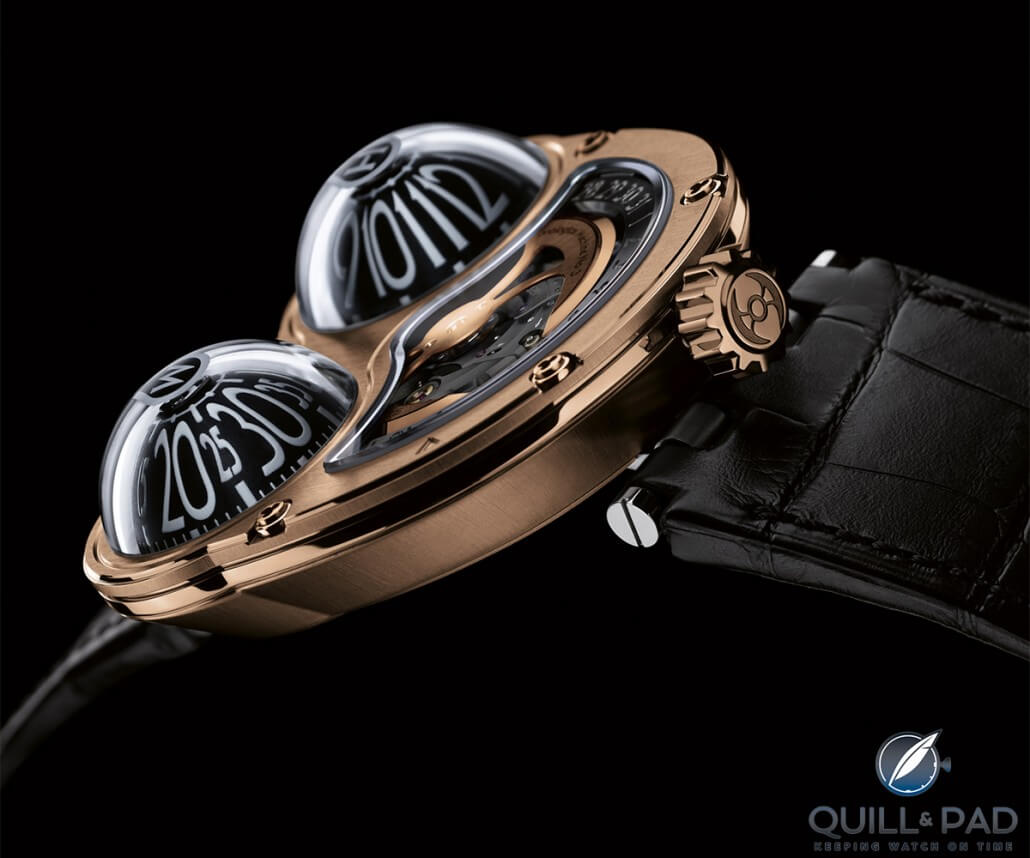
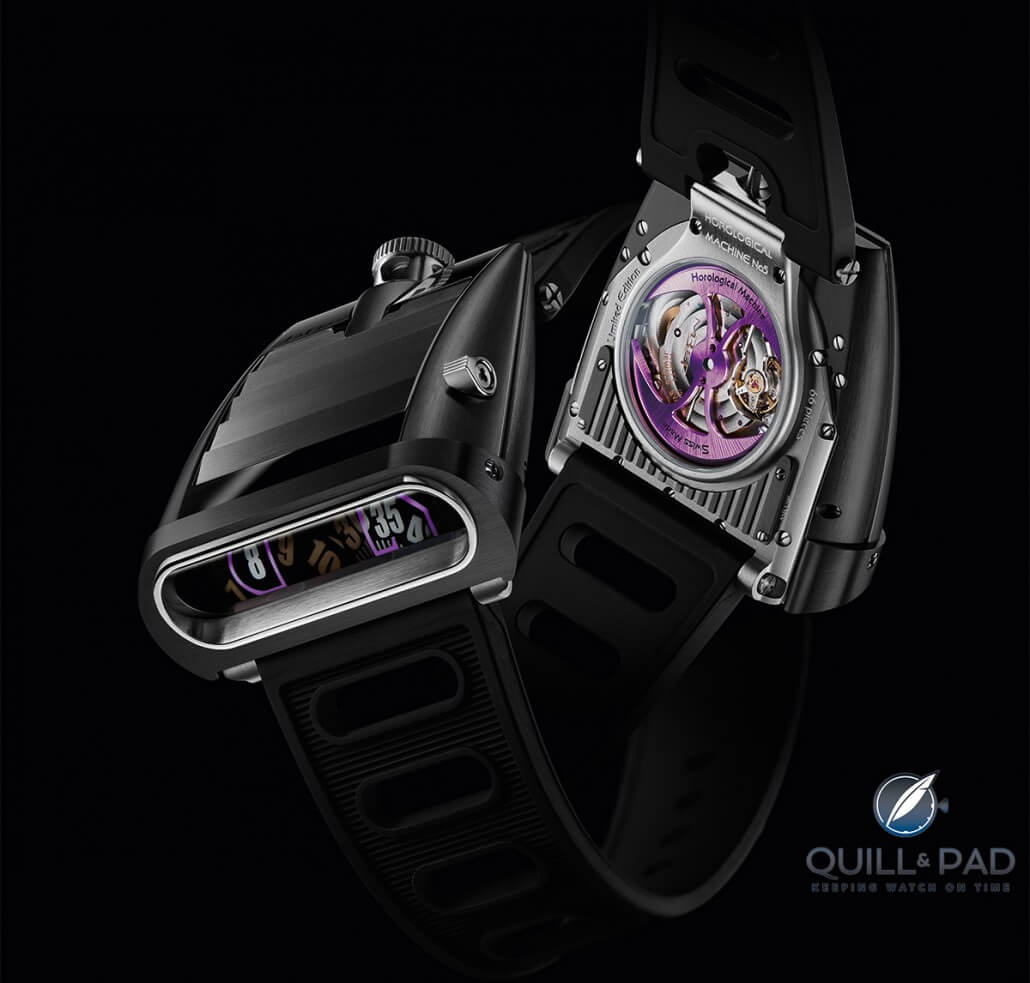
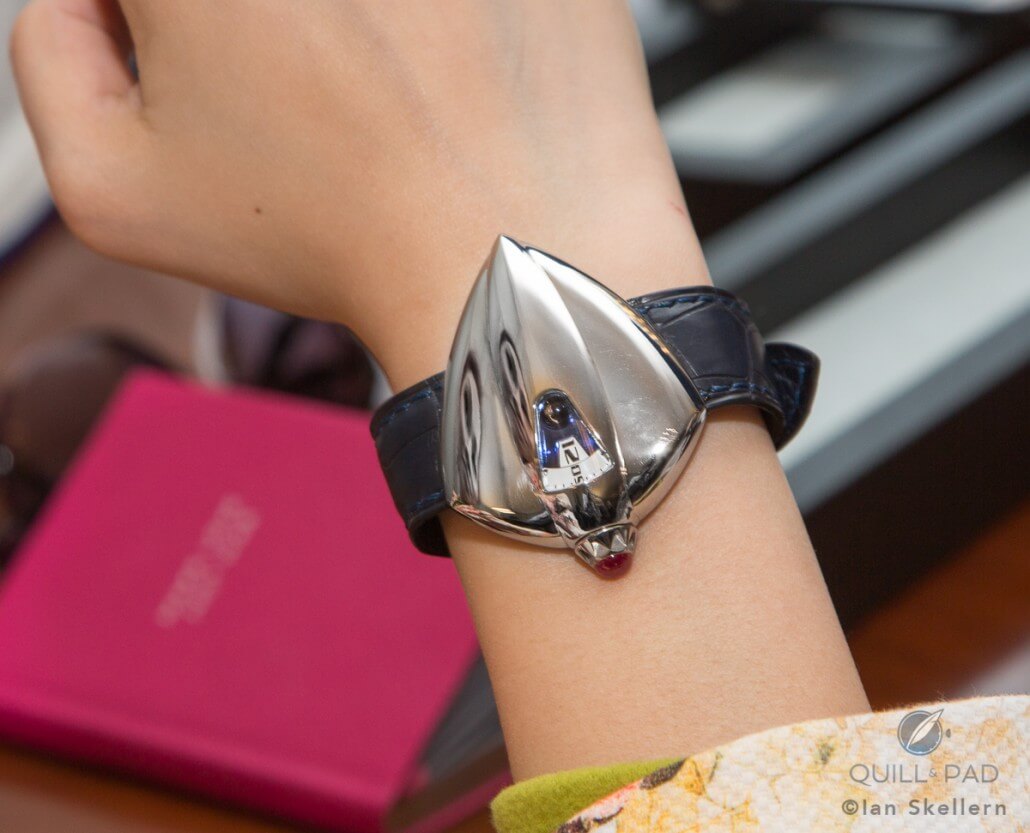
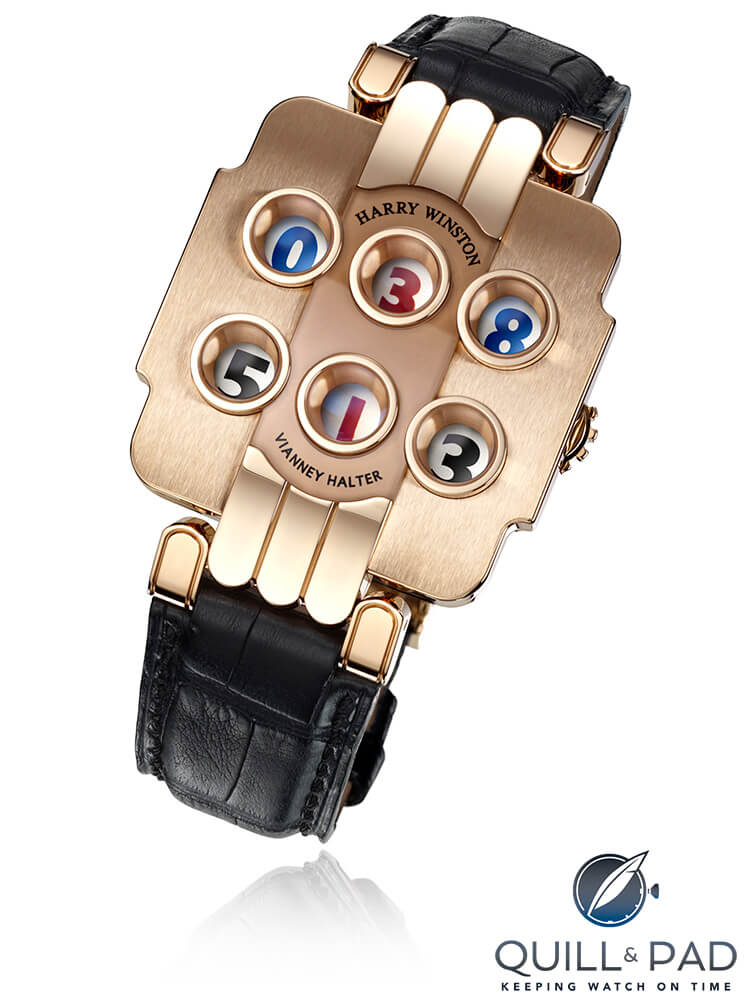
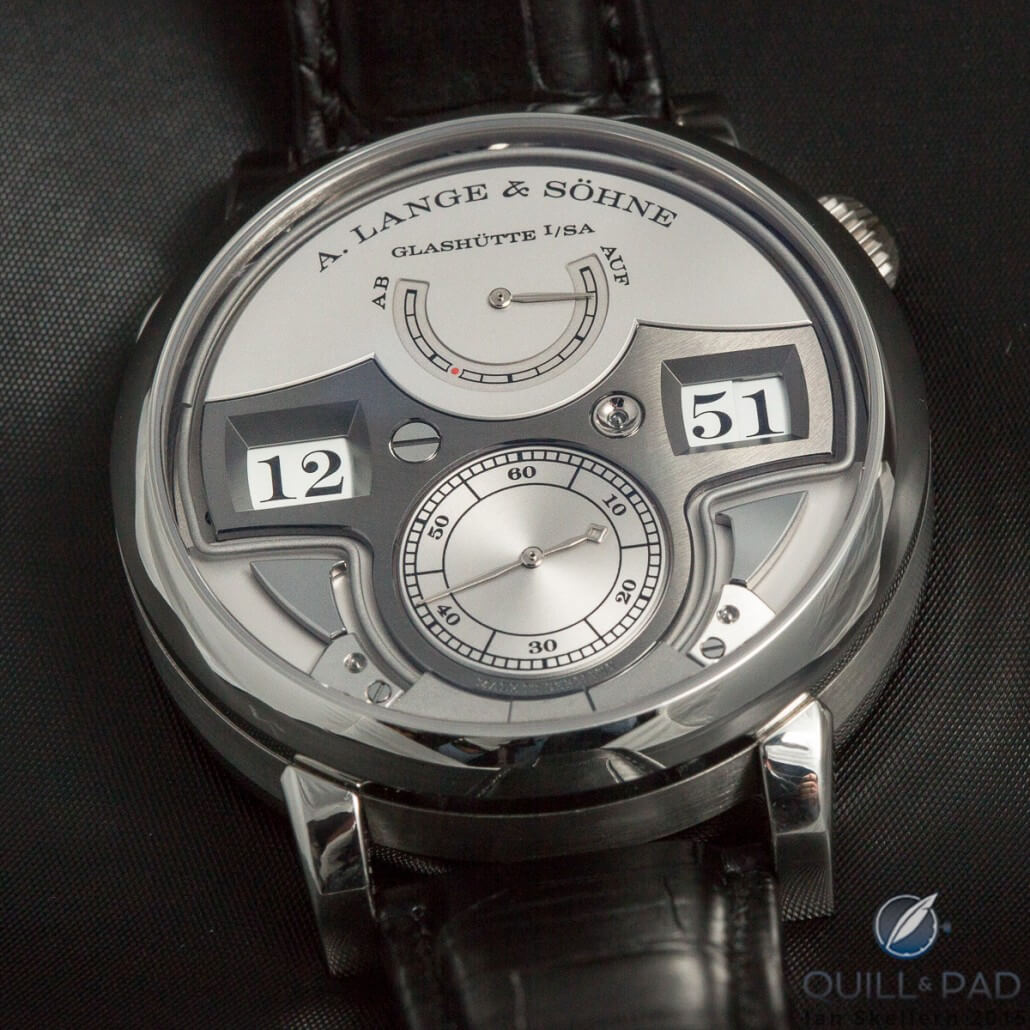
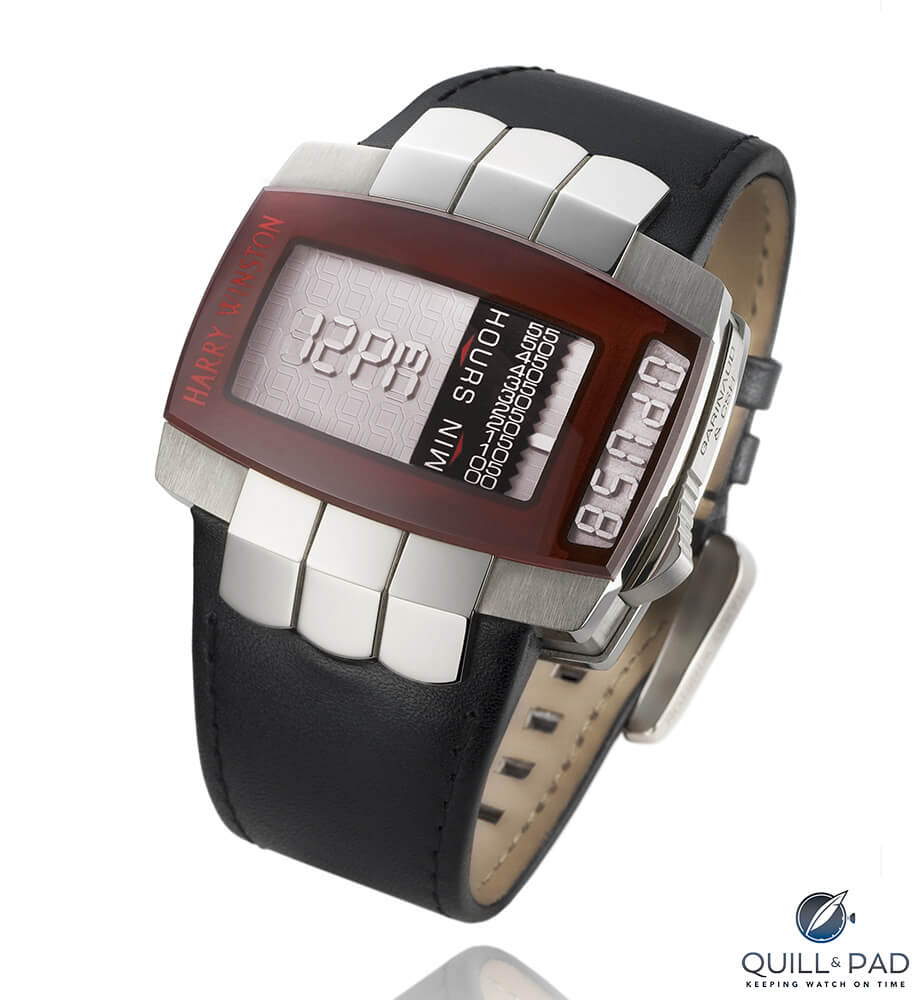
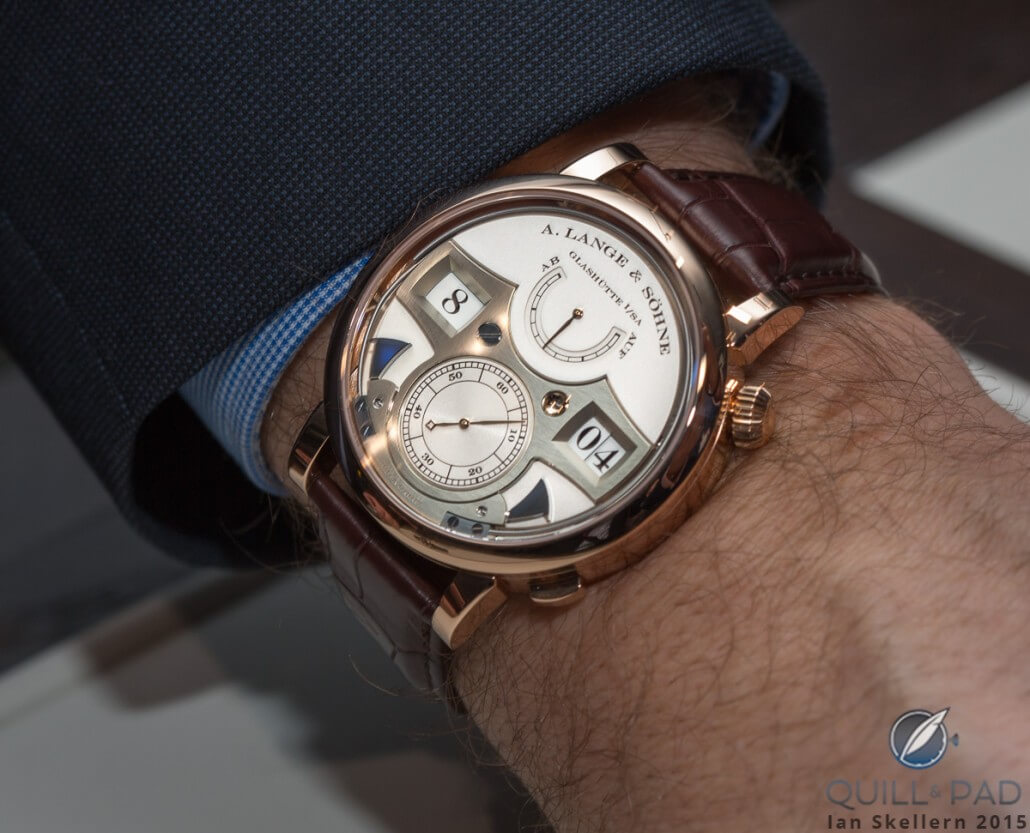
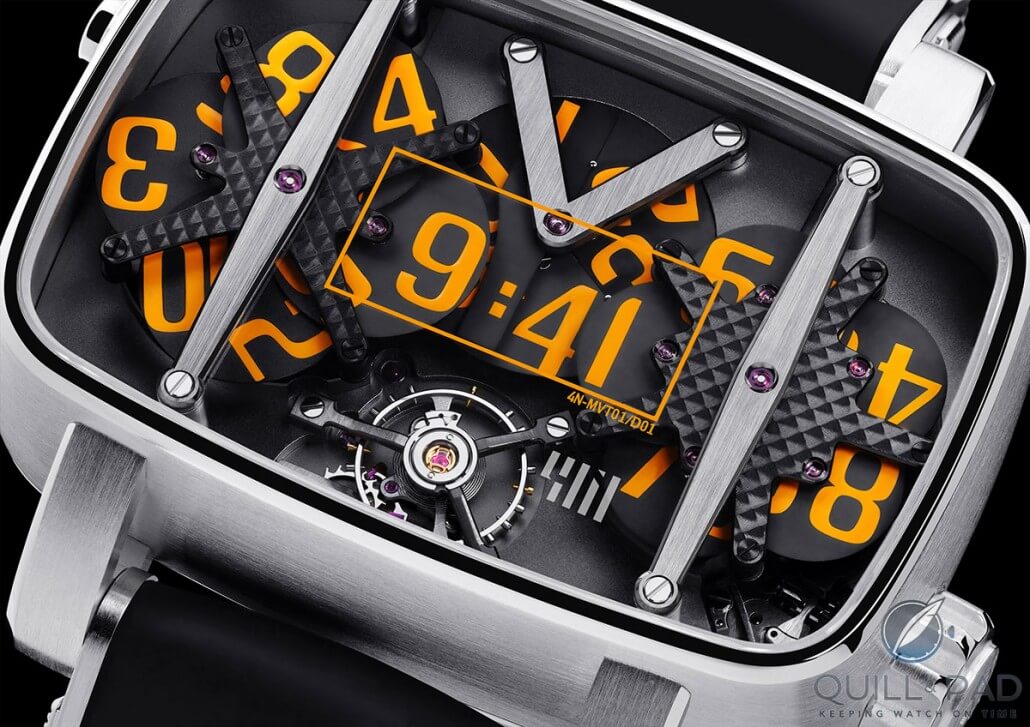
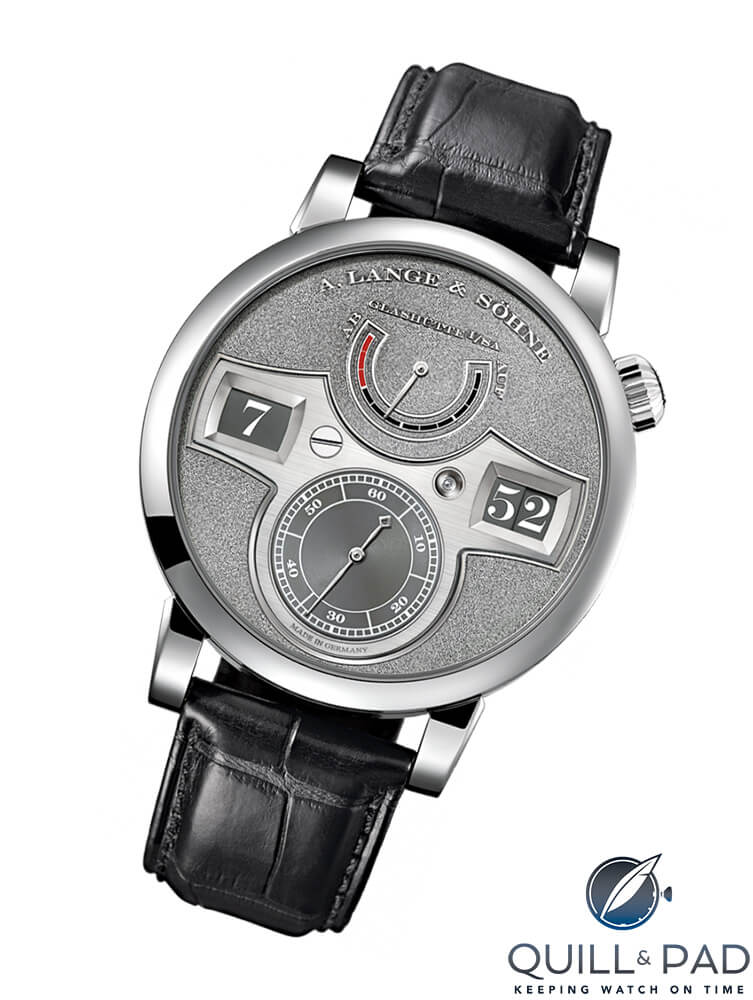
No DeGrissogono Digi watch?
The de Grisogono Meccanico DG is a great concept watch, and a very cool digital display. But for my list I had the criteria that the watches had to work and have been available for purchase. For this reason the Meccanico DG and another cool “digital” watch, the Opus 11, didn’t make the cut as they both are still in development due to technical hurdles. If or when they are brought to a level where they are working and available I would definitely add them to my list of favorite “digital” watches!